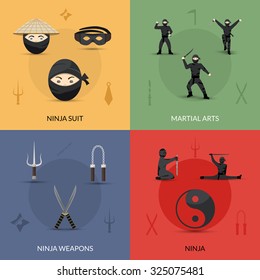The Background And Viewpoint Of Martial Arts: A Deep Dive
The Background And Viewpoint Of Martial Arts: A Deep Dive
Blog Article
Material Writer-Moesgaard Wall
Step into the ancient world where martial arts were substantiated of necessity in varied regions. https://www.fox61.com/article/features/fourth-is-strong-at-manchester-martial-arts-school/520-651e28a6-691c-4a28-856b-1983fe55bd68 battling styles linked with historical contexts. https://comparing-martial-arts-fo11986.blogdeazar.com/27785637/get-ready-to-discover-the-basics-of-self-defense-with-this-detailed-handbook-loaded-with-useful-abilities-for-you-to-check-out evolved over centuries with dedicated method and cultural exchanges. Today, modern-day martial arts blend conventional aspects for maximum effectiveness. Philosophically, martial arts emphasize technique, self-improvement, and harmony. Regard, humbleness, and balance are foundational principles directing practitioners towards development and resilience. Explore https://top-3-martial-arts-to-lea09986.wizzardsblog.com/27723512/kickstart-your-self-defense-skills-with-powerful-strategies-created-to-encourage-ladies-and-enhance-personal-essential-protection-skills-every-woman-must-find-out of this abundant background and viewpoint to discover the extensive impacts forming this long-lasting discipline.
Origins of Fighting Style
Fighting style originated in various areas all over the world, evolving as practical fight systems to defend against risks. These old combating styles were established out of need, with each society crafting strategies suited to their special environments and difficulties. From the grappling arts of Jujutsu in Japan to the striking techniques of Martial art in China, martial arts were deeply intertwined with the historic, social, and cultural fabric of their respective societies.
In Japan, the samurai class polished martial arts like Kenjutsu, the art of the sword, which later advanced right into the more popularized type of Kendo. At the same time, in Brazil, Capoeira emerged as a mix of dance and fight, produced by enslaved Africans as a way to withstand fascism. Each fighting style lugs with it an abundant history and philosophy, mirroring the worths and ideas of individuals that exercised them.
As you delve into the origins of martial arts, you uncover a tapestry of human resourcefulness, resilience, and the stubborn spirit of warriors throughout time.
Advancement of Techniques
With centuries of practice and improvement, combat methods within numerous martial arts have undertaken an extensive advancement. From old designs like Martial art and Martial arts to more modern-day self-controls such as Brazilian Jiu-Jitsu and Krav Maga, the evolution of methods has actually been driven by a combination of social impacts, functional applications, and technological advancements.
One significant aspect of this development is the cross-pollination of techniques between different martial arts. For example, techniques from typical Japanese Jiu-Jitsu were incorporated into the production of Judo by Jigoro Kano in the late 19th century. This blending of styles has resulted in the advancement of crossbreed martial arts like Mixed Martial Arts (MMA), which incorporate aspects of striking, grappling, and entry techniques.
In all-attribute martial arts , the evolution of strategies has actually been shaped by the enhancing focus on efficiency and effectiveness in fight. Specialists have actually constantly sought to improve their strategies with strenuous training, testing, and competition, bring about the growth of highly specialized and efficient combating styles. In general, the evolution of techniques in martial arts shows the dynamic nature of fight and the ongoing quest for enhancement and advancement.
Thoughtful Structures
Exploring the underlying philosophical concepts of martial arts provides understanding into their core values and leading ideas. At the heart of several martial arts disciplines is the idea of discipline itself. By training your mind and body to function as one cohesive device, you cultivate technique that prolongs past the dojo or gym into day-to-day life. This technique includes respect, humbleness, and self-constraint, shaping not just your physical abilities but additionally your character.
Another essential philosophical foundation in martial arts is the idea of continuous self-improvement. The journey of understanding a fighting style is never-ending, with practitioners regularly aiming to better themselves, both literally and emotionally. This concentrate on development promotes strength, willpower, and a development frame of mind that can be applied to all elements of life.
Furthermore, martial arts highlight the importance of harmony and balance. Techniques are designed to make use of a challenger's power versus them, highlighting the principle of yielding and rerouting pressure rather than meeting it head-on. This ideology encompasses interpersonal relationships, promoting relaxed resolutions and mutual understanding. By accepting these philosophical foundations, martial artists not just improve their fight abilities however additionally grow a lifestyle centered on individual development, regard, and consistency.
Final thought
To conclude, the history and ideology of martial arts provide a rich tapestry of custom, discipline, and self-improvement.
Consider example the tale of Bruce Lee, that reinvented martial arts by mixing various styles and ideologies to develop his own distinct form of Jeet Kune Do.
With dedication and innovation, martial artists continue to press boundaries and inspire others to reach their complete potential both in battle and in life.
